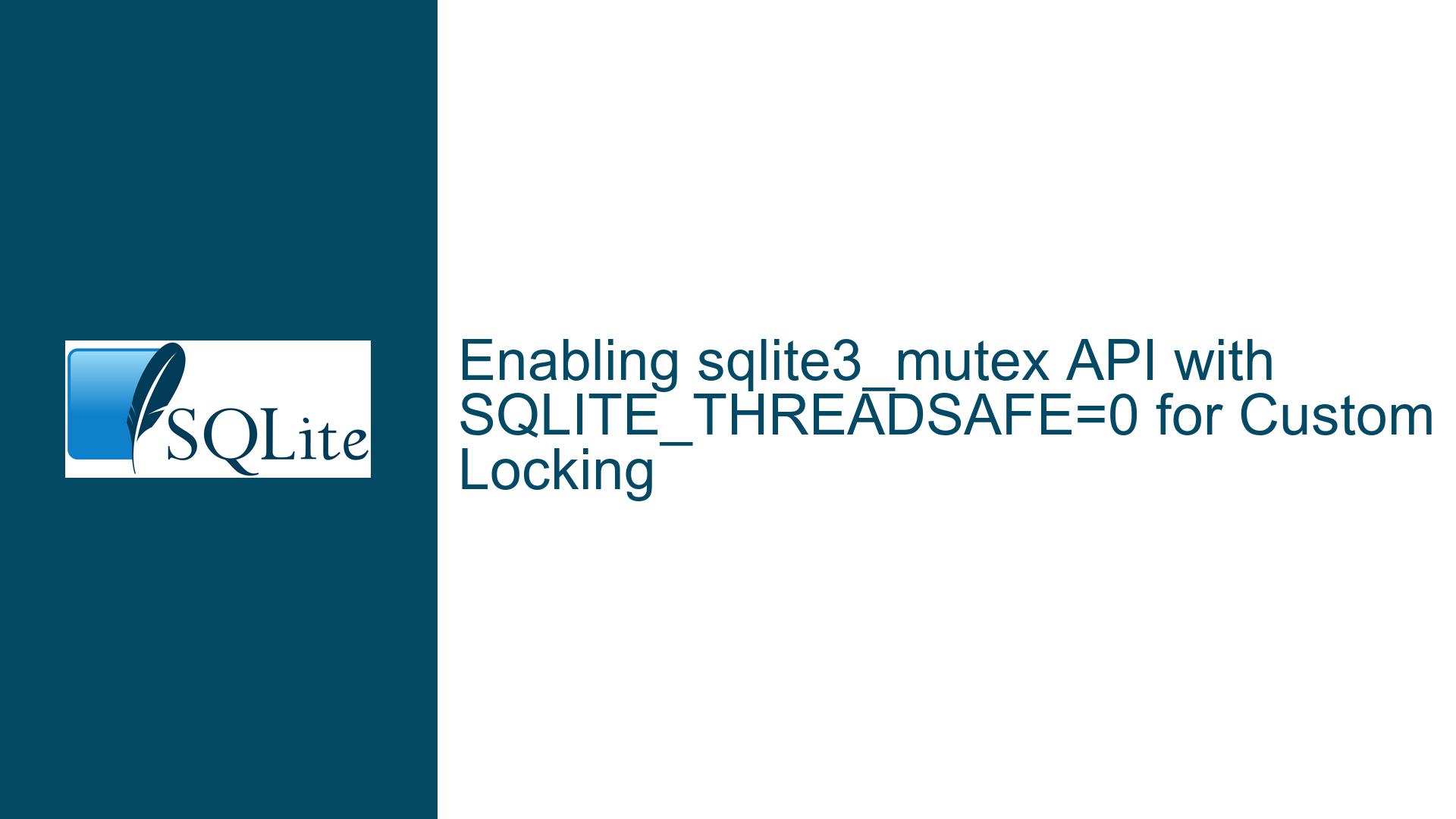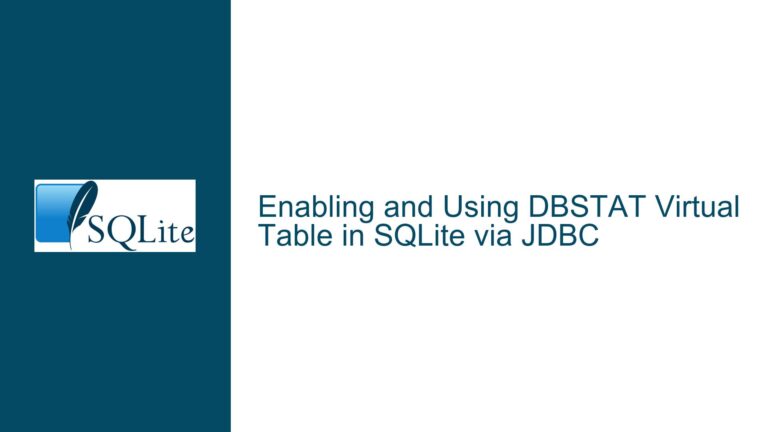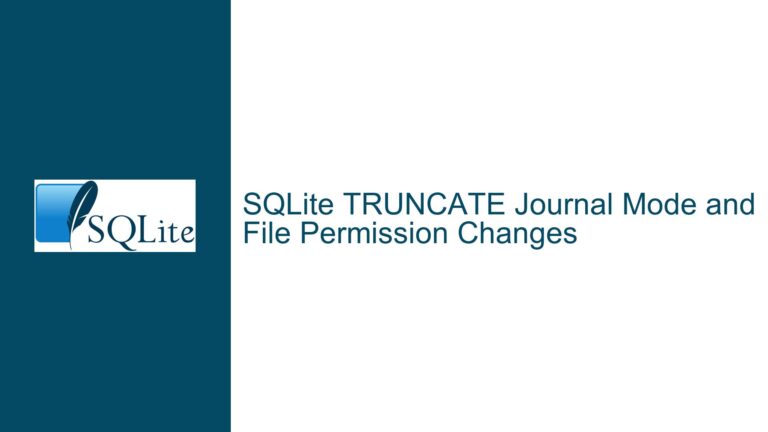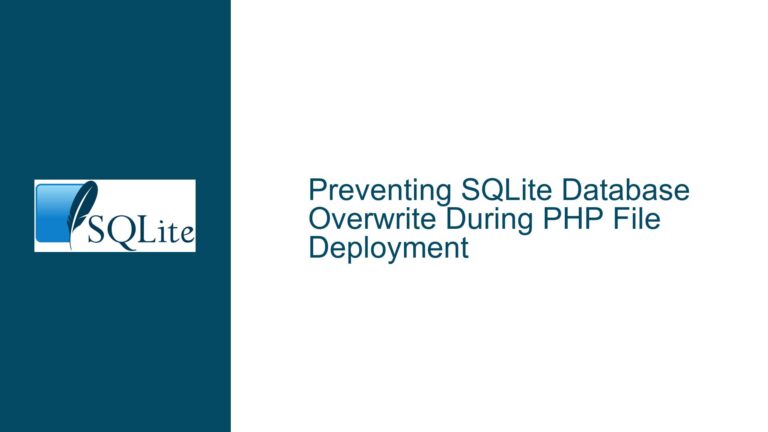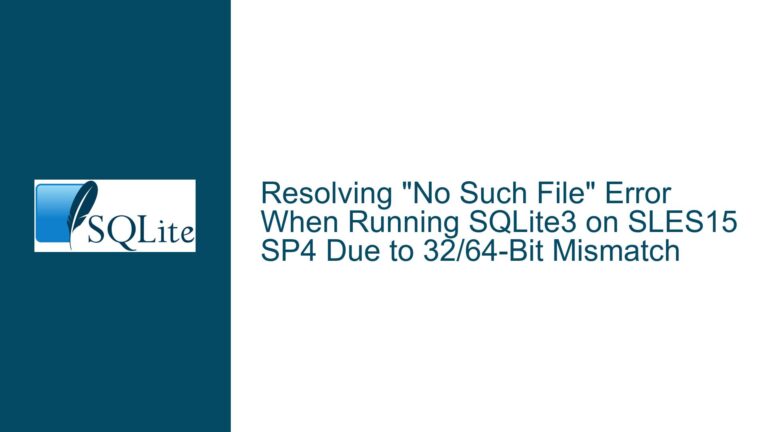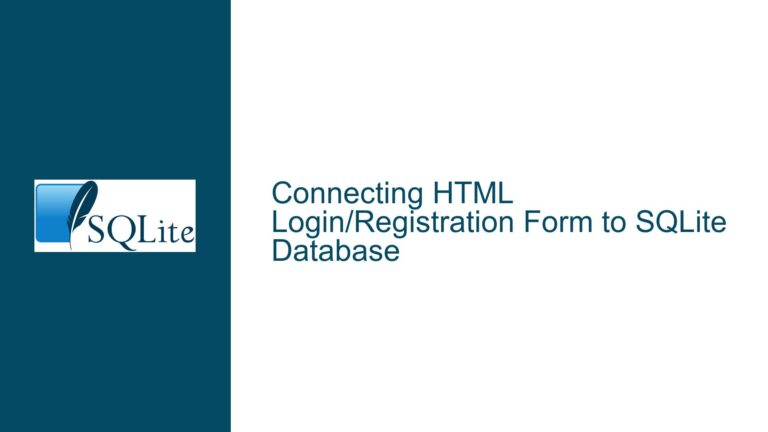Enabling sqlite3_mutex API with SQLITE_THREADSAFE=0 for Custom Locking
Understanding the SQLITE_THREADSAFE Compilation Flag and Its Implications
The SQLITE_THREADSAFE compilation flag is a critical configuration option in SQLite that determines the level of thread safety enforced by the library. When SQLite is compiled with SQLITE_THREADSAFE=0, the library is configured to operate in a single-threaded mode, meaning it assumes that only one thread will access the database at any given time. This configuration disables all internal mutex operations, including the sqlite3_mutex_… API, which is responsible for managing thread synchronization. The rationale behind this is to eliminate the overhead associated with mutex operations, thereby optimizing performance for single-threaded applications.
However, this configuration poses a challenge when integrating SQLite with third-party libraries or extensions that rely on the sqlite3_mutex_… API for their own thread synchronization mechanisms. For instance, libraries like GDAL (Geospatial Data Abstraction Library) may require access to the sqlite3_mutex_… API to implement custom locking strategies, even if they do not explicitly require SQLite to be thread-safe. This creates a conflict: while the application developer may prefer to compile SQLite with SQLITE_THREADSAFE=0 to maximize performance, the third-party library may fail to function correctly without access to the mutex API.
The core issue, therefore, revolves around the inability to selectively enable the sqlite3_mutex_… API while keeping SQLITE_THREADSAFE=0. This limitation forces developers to choose between two suboptimal options: either compile SQLite with SQLITE_THREADSAFE=2, which introduces unnecessary overhead for single-threaded applications, or forgo the use of third-party libraries that depend on the mutex API. This dilemma highlights a gap in SQLite’s configuration options, where developers are unable to fine-tune the library’s behavior to meet specific performance and compatibility requirements.
The Performance Overhead of SQLITE_THREADSAFE=2 and Its Impact on Global Data Access
The performance implications of using SQLITE_THREADSAFE=2 versus SQLITE_THREADSAFE=0 are not well-documented, but they can be significant depending on the application’s access patterns. When SQLite is compiled with SQLITE_THREADSAFE=2, the library enforces thread safety for global data but does not enforce thread safety at the connection level. This means that while multiple threads can access different database connections concurrently, any access to global data structures (such as memory statistics or shared caches) will incur the overhead of mutex operations.
The cost of these mutex operations can vary depending on the operating system and the specific implementation of mutexes, but it generally ranges from a few microseconds per access attempt. In high-throughput applications, where global data is accessed frequently, this overhead can accumulate and lead to measurable performance degradation. For example, if an application performs thousands of memory allocation operations per second, each of these operations may require acquiring and releasing a mutex, adding significant latency to the overall execution time.
In contrast, SQLITE_THREADSAFE=0 eliminates this overhead entirely by assuming that only one thread will access the library at any given time. This configuration is ideal for single-threaded applications or applications that implement their own thread synchronization mechanisms. However, as previously mentioned, this configuration also disables the sqlite3_mutex_… API, making it incompatible with third-party libraries that rely on this API for their own locking strategies.
The trade-off between performance and compatibility is further complicated by the fact that some global data structures in SQLite are inherently thread-unsafe. For example, the memory statistics subsystem (enabled by the SQLITE_CONFIG_MEMSTATUS option) relies on global variables that are not protected by mutexes when SQLITE_THREADSAFE=0. If multiple threads attempt to access these variables concurrently, the result can be data corruption, crashes, or other undefined behavior. This underscores the importance of understanding the specific requirements of the application and the third-party libraries it depends on when choosing the appropriate SQLITE_THREADSAFE configuration.
Troubleshooting Steps, Solutions, and Fixes for Selective Mutex API Enablement
Given the challenges outlined above, developers seeking to enable the sqlite3_mutex_… API while keeping SQLITE_THREADSAFE=0 have several options, each with its own trade-offs. The following steps outline potential solutions and fixes for this issue:
Custom Build with SQLITE_MUTEX_FORCE Macro: One possible solution is to introduce a custom build macro, such as SQLITE_MUTEX_FORCE, that enables the sqlite3_mutex_… API even when SQLITE_THREADSAFE=0. This macro would allow developers to selectively compile the mutex API without enabling thread safety at the connection level. Implementing this solution would require modifying the SQLite source code to conditionally include the mutex API based on the presence of the SQLITE_MUTEX_FORCE macro. While this approach provides the flexibility needed to meet specific performance and compatibility requirements, it also introduces additional complexity and maintenance overhead, as the custom build would need to be maintained alongside the official SQLite releases.
Use of SQLITE_MUTEX_NOOP: Another option is to leverage the SQLITE_MUTEX_NOOP configuration, which provides no-op implementations of the mutex API. This configuration ensures that the mutex functions are present and can be called, but they do not perform any actual synchronization. While this approach allows third-party libraries to link against the mutex API without introducing the overhead of actual mutex operations, it also carries the risk of undefined behavior if the library assumes that the mutex functions provide proper synchronization. Developers should carefully evaluate the requirements of the third-party library before using this option, as it may not be suitable for all use cases.
Refactoring Third-Party Libraries: In some cases, it may be possible to refactor the third-party library to eliminate its dependency on the sqlite3_mutex_… API. For example, if the library uses the mutex API solely to implement global locking, it may be possible to replace this implementation with a custom locking mechanism that does not rely on SQLite’s mutex functions. This approach requires a deep understanding of the third-party library’s codebase and may not be feasible for all libraries, but it offers a way to achieve compatibility without modifying SQLite’s configuration.
Selective Use of SQLITE_THREADSAFE=2: If the performance overhead of SQLITE_THREADSAFE=2 is acceptable for the specific use case, developers can simply compile SQLite with this configuration to ensure compatibility with third-party libraries. While this approach introduces additional overhead, it may be the simplest and most reliable solution in cases where the performance impact is minimal or where the application’s throughput requirements do not justify the complexity of custom builds or refactoring.
Dynamic Call Trampoline Implementation: For libraries that dynamically link against SQLite, it may be possible to implement a dynamic call trampoline that selectively binds to the mutex API only when it is available. This approach involves querying the SQLite library at runtime to determine whether the mutex functions are present and then binding to them if they are. If the mutex functions are not available, the trampoline can fall back to a custom implementation or no-op functions. This approach requires careful design to ensure that the trampoline handles missing functions gracefully and does not introduce additional overhead or complexity.
In conclusion, the issue of enabling the sqlite3_mutex_… API while keeping SQLITE_THREADSAFE=0 is a complex one that requires careful consideration of the specific requirements and constraints of the application and the third-party libraries it depends on. By understanding the implications of different SQLITE_THREADSAFE configurations and exploring the various solutions outlined above, developers can make informed decisions that balance performance, compatibility, and maintainability.
